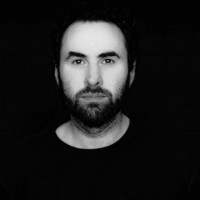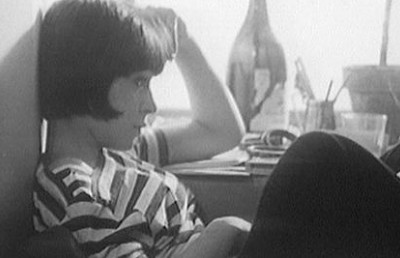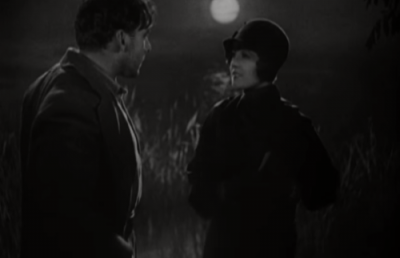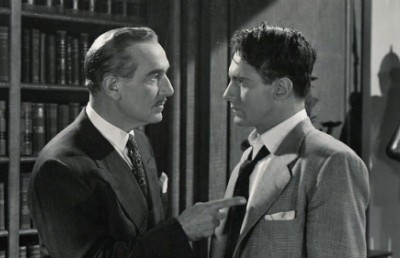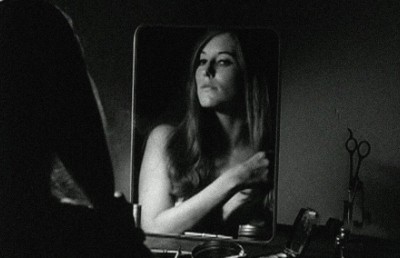The Lingering Taste of Fragmented Narratives; A Conversation with Filmmaker Winston DeGiobbi
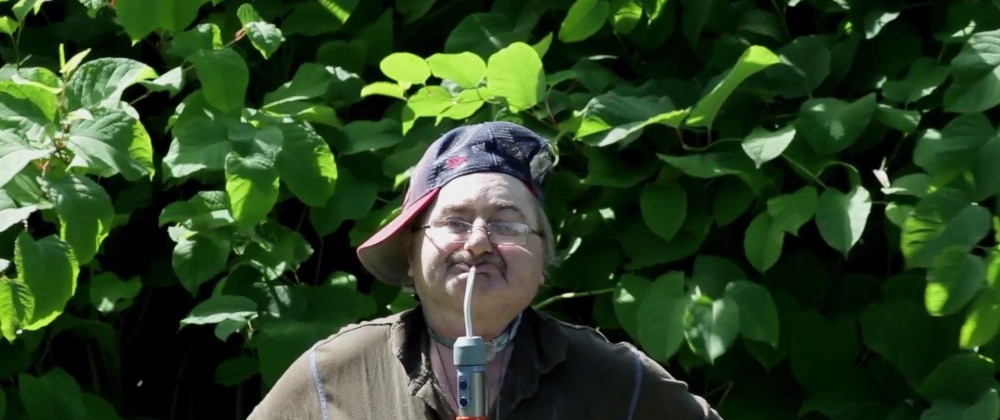
“Someone who can work with the minimum can work with the most. One who can with the most cannot, inevitably, with the minimum.”
-Robert Bresson 1
Stan Brakhage’s 1971 manifesto “In Defense of the Amateur” called for more “fat” films to be projected in the cinema. The slips, clumsiness and “mis-takes” of home movies needed to be reconsidered as genuine works of auteur cinema. Within these films, the fragments and errors of the everyday are assembled “directly and solely according to the needs of memory,” 2 and an original, radically subjective form of storytelling emerges as the familial spaces of a filmmaker’s life becomes reframed as strange and uncanny. This praise for no-budget films echoes Maya Deren’s “Amateur Versus Professional” (1959), which was written about a decade earlier. Deren emphasizes the originality of the amateur, which, in contrast with the professional filmmaker, is concerned much more with the pure poetry of motion, reflections on the everyday, and alternative storytelling that emerges through a rejection of traditional forms of plot progression. This approach can also be seen in the work of Robert Bresson, whose obsessive non-direction of his found “models” and employment of fragmented editing and framing styles aimed to emphasize mood, atmosphere, and emotion, rather than the linearity of character driven dramas demanded by more mainstream forms of cinema.
The work of self-taught Nova Scotia filmmaker Winston DeGiobbi integrates the intimate radicalism of experimental first-person filmmakers while leading viewers through a drift of narrative fragments. All of his work thus far is situated in New Waterford, Nova Scotia, his isolated hometown in Canada’s east coast rust belt. He shoots, directs, edits, and writes all of his work with the help of his family and friends. His last short film Higgy Wants In (2015) was awarded best Canadian film at the WNDX Festival of the Moving Image, and his first feature, Mass for Shut-Ins (2017), is currently on the festival circuit. The following is a conversation between artists; a discussion of the processes, origins, and trajectory of this fascinating new voice in Canadian cinema.
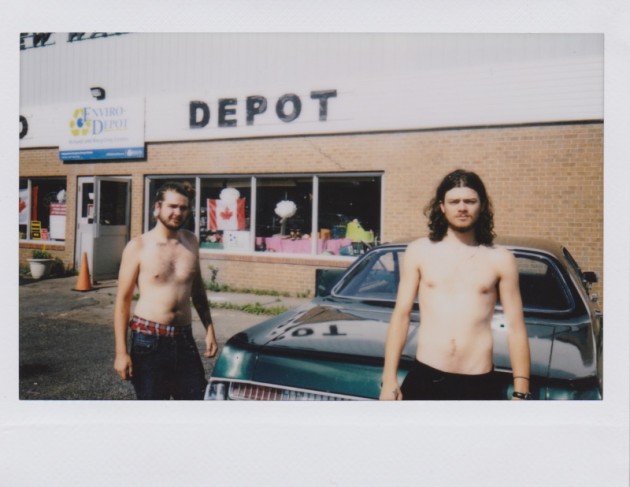
Mass for Shut-Ins
OFFSCREEN (OS): About a decade ago I was helping to curate the fledgling Halifax Independent Filmmakers’ Festival. As we were shifting through the submissions, a modest DVD came to our attention. The case was a wrinkled paper envelope, with the title of film, Buggery (2010), traced over several times in black ink. There was a Marcel Dzama-inspired drawing of a pig on one side, and a penis drawn on the other. To put it bluntly, after shifting through a load of overly sentimental, nauseatingly polished East Coast lighthouse-themed films, this hit us like a sack of bricks. It was fiercely original, dark, perverse, with a grit that was hitherto unseen in work from our region. This film, which has since been erased from your filmography, was an assembly of footnotes to the classics of underground cinema. For all the transgression and weirdness in Buggery, it contained a fluid elliptical structure of fragmented narratives, interrupted by bursts of sexual deviance and obsolete moving image formats such as super 8mm and Hi8. It was the first time any of us saw a filmmaker embrace the darker, desperate parts of post-industrial rural Nova Scotia. The curatorial jury gasped aloud, trying to figure out how a young filmmaker from a town so isolated from everything could develop such a sophisticated aesthetic.
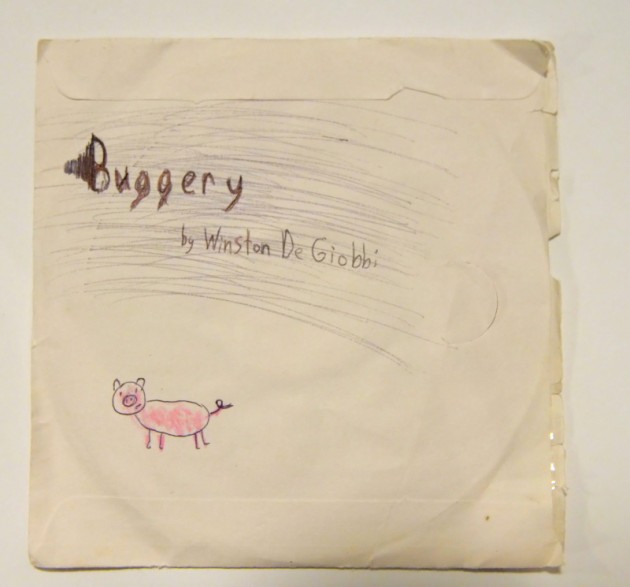
Buggery Cover Still
After completing the programming for the festival, I ran home and quickly did some internet stalking. I found a video on the remnants of a sparse MySpace page. Shot on Hi8, it documents you walking through the streets of New Waterford in cutoff jeans and army boots. You enter into the modest, sparse, and somewhat rundown turn of the century company house of an elderly couple. Your Bressonian body was expressionless, without any emotion or purpose. The camera cuts to a shot of an elderly lady in a Mumu dress. In slow motion, she mumbles something to the camera that is incomprehensible, frightening, and grotesque. The camera cuts back to you, now in real time, and you enter a barely furnished bedroom with a mattress and a dusty organ. The elderly man follows you into the room and sits down at the organ. You lie down on your back, lift your booted feet into the air, and start to clap mindlessly, but in rhythm. The elderly man then starts to sing a song, accompanying himself on the organ; but since his dentures are not in properly, the lyrics are also incomprehensible. You continue to clap to his song, and he gleefully sings away. Then the film ends.
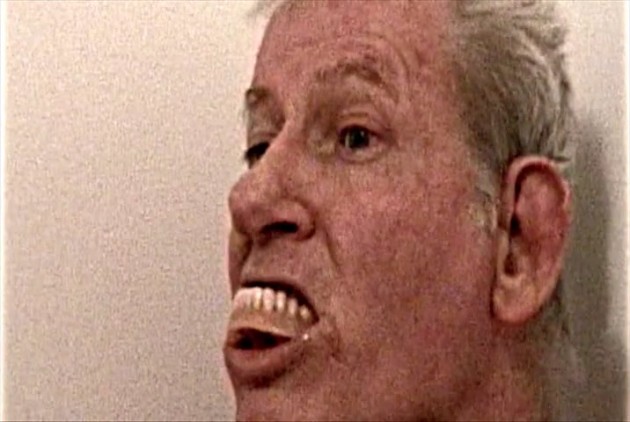
Higgy Wants In
In the years since, your work has continued to develop this aesthetic of awkwardness, failure, sexual transgression, and family. If your filmmaking style was a child, it would have been conceived by Harmony Korine and Robert Bresson, but abandoned in the Cape Breton fog and brought up by Bruno Dumont in New Waterford, Nova Scotia. With all this mythologizing out of the way, can you explain your origins as a self-taught filmmaker? Where did you glean your cinematic insights while growing up in such isolation from established film communities?
Winston DeGiobbi (WDG): The guy with the dentures is my uncle Michael who has, in some form, appeared in basically everything I made. But to answer your question, I think watching television and spending hours in video stores. Versatile Video in New Waterford would send me Christmas cards. I remember being in the 8th grade and staying up all night with friends to watch two or three Russ Meyer films that the Bravo network would show every Saturday. It’s just the greatest cinema of obsession and dreams. Then, over on the Showcase channel they would show Lukas Moodysson and Dogme films. I caught the ending of O Fantasma (2001, João Pedro Rodrigues) on that channel, and it really floored me. I think those films in particular were sort of the impetus. They are deeply personal and honest and didn’t leave me feeling so disconnected . . . the good ones make you feel less alone and give you a lot to digest. You carry them with you. I would then read interviews and find out what filmmakers I liked were into and I would try to find those titles.
There was a poetry to characters who came around the house, certain family members and their whole dynamic. I was inspired enough to take out my grandfather’s clunky VHS camcorder and make a bunch of things. I did that for years. It’s safe to say going through his home movie archive was essential.
He would rent a cabin in Iona and travel from New Waterford in a camper van packed with people. He basically recorded everything on those getaways. The footage that stuck with me the most would be moments with his best friend Higgy, who worked with him in the coal mine. Higgy had narcolepsy and one time he fell asleep on the rake as they were descending miles under the ocean floor and got his head crushed because, at a certain point, everyone on the rake had to duck down. Somehow, he survived that. I used footage of Higgy in my last short film from one of the home movies. That guy was a true original.
OS: There is a remarkable integration of home movies in your short film work. You emphasize the hiccups and fuzz of these unarchivable media, and even seem to direct your actors to be the phantom presences of these familial amateurs. There is a strange comfort watching you direct actors you have such an intimate connection with. It reminds me of the early work of Turkish filmmaker Nuri Bilge Ceylan, casting family members to act out every day existential situations that reveal the natural poetry within his fictionalized biography.
Your characters are unromantic, perennial outsiders. You don’t mock or glorify their scars, disabilities, and awkwardness. Rather, it seems you genuinely collaborate with them. The failure, or physical inability, to speak seems subtly present in your early short films. The protagonist in Bright Rubber Cones (2017) has an abnormally high-pitched voice, which is awkwardly juxtaposed with his Village People construction worker outfit and his burly, somewhat androgynous girth. In Higgy Wants In, our narrator has had throat cancer, and speaks with an electrolarynx. He is almost incomprehensible, save for the conclusion of the film, when he confronts Higgy after his transgressive adventure into the basement of our insomniac protagonist, who has fallen asleep after a marathon of home movie watching. He is framed only from the waist-up, with plenty of negative space bearing down upon him as he smiles and vibra-talks to the audience, proudly showing off his ratty Montreal Canadiens’ hat. The insomniac’s mother seems perpetually stuck in an OCD suburban household chore loop, swallowing curses and repeating “oh fudge” over and over.
Can you tell us about how you script your collaborations with these non-actors? Do you develop stories based on the specificity of their everyday outsider personas, or do you exert a type of Bressonian control over them, sculpting their failures and scrubby bodies into a vision that is wholly your own?
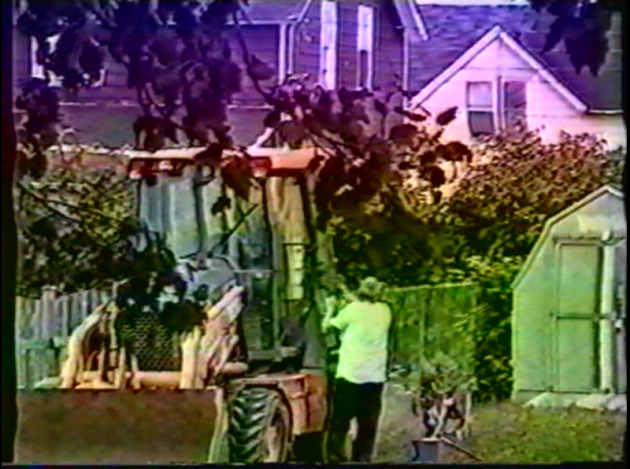
Bright Rubber Cones
WDG: A lot of the time I’m thinking of someone I know or my own neuroticism when conceiving the thing and any script, if it starts with a script, is usually abandoned before we shoot. By finding the scenes as you go, the actors are able to take you into far more complex and strange places. With Higgy Wants In, my aunt had just moved in next door and she was cleaning up the yard with her daughter Hannah. I take a walk over with a DSLR around my neck, which can look like you’re just taking pictures or flipping through the menu. Most of the time, they wouldn’t know I was recording. I went back home, reviewed the footage and started to build a story around Hannah announcing she hadn’t slept in 38 hours. At the same time, I can obsess over a composition or a single line of dialogue written in a notebook. I’ll say, “I need you to wear a yellow sweater and stand exactly in this spot.”
OS: Gleaning ideas, landscapes, people in your life, tapping into synchronicity as a means of scripting an experimental narrative work, it’s a great method. Was there a similar process of improvisation and shooting on the fly for your first feature, Mass for Shut-Ins?
WDG: With Mass for Shut-Ins, a lot more was set in place before shooting began. I wrote the characters of Loppers and Kay Jay into a couple of screenplays, so going into it I had a strong idea of who these people were. I was able to secure a rundown apartment building that was once a convent. The place was extremely helpful, because for days we were able to feed off of this amazing physical space. It had a very specific, unsettling energy. You’d pass by a confession booth to find a room with a monkey wrench on a bed and in front of the bed you’d see a syringe on a DVD player.
Once we discussed the nature of their relationship, my actors would give so much of themselves in interpreting the thing that it would take us in other directions. Joey MacLean, for instance, who plays Loppers, has one of greatest voices I’ve heard and I’ve always thought of him for the role. Loppers is winding down from a dirty past, a lot of strip joints and motorcycles, a lot of blues rock, which isn’t a stretch from who Joey really is, so we leaned into that. Charles McKenzie, who plays Kay Jay, has an affinity for guns which led me to Pickle’s character. Away from the convent, it became more of a social experience and about throwing us all out of our comfort zone.
OS: Yet experimentation in your work expands beyond these collaborations. We often find the material of your motion picture medium of choice (Super 8, Hi8, VHS, etc.) rubbing away the narrative content during key points in the plot. In Bright Rubber Cones and Buggery you drop in rotting home movie material, while both Higgy Wants In and Mass for Shut-Ins use blocks of pastel color, divvying up the story into fragments. With the latter, it seems you are erasing elements of the film rather than using these techniques as a means of wayfinding. It’s a nuanced, aspartame-like taste that resides in our mouths as we slide from one awkward moment to the next. Mass for Shut-Ins and Higgy Wants In also share the integration of radical, hiccupped editing breaches, such as repeats of characters drifting in boredom or a white-noise induced loop of radical repetition. A character’s eczema-cracked gaze pulses towards us while a drifting protagonist flickers on screen as he stumbles to a violent sexual encounter. These techniques propose that something other than character, voice, and the natural motion of bodies can contribute to the way a story is told. Can you describe some of your technical and narrative strategies when incorporating these experimentations?
WDG: Ray Carney said “Plot has almost nothing to do with a great film’s complex pleasures.” Narratively I’ve always been interested in a more indirect way of giving you information. I want you to stumble into it, like hearing a conversation that wasn’t meant for you, the way you might piece someone’s story together in a waiting room. You could find yourself staring at their shoes for five minutes. I’m more concerned about, as you put it, the lingering taste in the mouth. The specificity of the characters world -their marginal lives are more of a visceral thing for me and more about a texture. I understand this can result in something fragmented, especially in comparison to a lot of movies. I also have characters who barely communicate and people may or may not find a way in, but you know in life we’re not always given a comforting amount of insight into someone.
On a technical level, I haven’t been trained to use a camera. With the feature, the only other guy behind our consumer camera was my cousin Dante recording sound, so I’m not going to pretend it’s more than that. What our equipment lacked, I would push it as much as possible to show me something in a way I haven’t seen before. You can always tell when someone is jerking off and aiming beyond their reach. Another thing is we’re not watching TV or movies like we used to. Most of us are watching vloggers and streaming shit. The way our devices have become such an appendage to us now is pretty interesting and there’s obviously an anxiety that comes with that. For example, the films are cut together on my laptop and I always have YouTube open. I suppose I’ve let those things become an entity that infects the edit. Now there are digital glitches and blocks of colour. It becomes part of the structure.
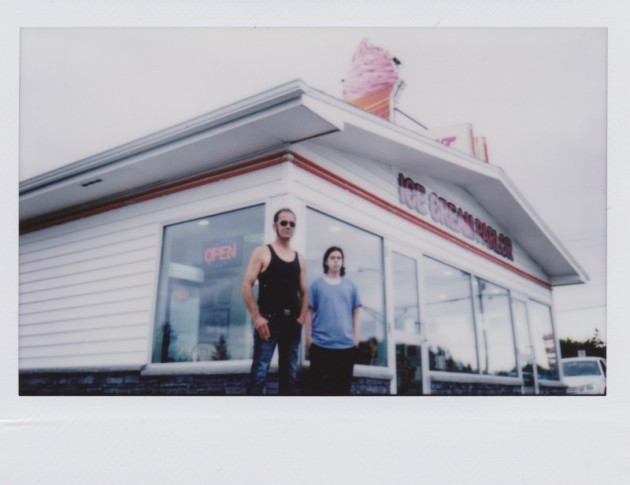
Mass For Shut Ins
OS: Working while having a wallpaper of ambient visual noise around you, I know so many artists who incorporate this into their process. It’s also clear that in your work, moments of clarity or focus often happen when there is a thick layer of white noise blanketing a character’s epiphanies. But I want you talk more about your one-man band approach to filmmaking. You shoot, write and edit your work. Your family members create the soundscape and work as crew. I’m not sure if this is done out of necessity or choice, but you achieve such a remarkable subjective visual language by taking all this on. In Mass for Shut-Ins, your framing is radically fragmented. We get these slices of aberrant bodies, the folds, scars and faded tattoos that we rarely see as the primary focus of camerawork. Their gazes, often bored, blasé and listless, are only partially revealed. It is so overtly Bressonian in its incompleteness, leaving it up to the viewer to compose a complete picture of this person’s place in the environs, speaking silently through gestures to the super-flatness of the film’s structure. Yet, at other times, the camera is performative and lyrical, offering a panoptic, playful, fisheye view of that rundown convent/abandoned apartment building where you situated much of the film. Is this obsessive, do everything, attitude essential to your process? Will this change as you inevitably get more funding for your work?
WDG: Initially, I believe I’m doing it out of necessity, but then I realize I’ve been very careful to avoid a situation where I could have the wrong people around. It takes one bad apple, man. I came pretty close to making that mistake on Mass for Shut-Ins. Right now it’s really the only way I know how to work. I don’t entirely trust a filmmaker who has a clinical detachment to the performers and the material. You can always tell. You could say establishing that kind of intimacy would service the non-professional actors and get us to those golden moments but I also think the same thing could happen with Corey Feldman on set. I did collaborate in post for the colour correction and sound edit on Mass for Shut-Ins. I got so lucky there. No weirdos. I would love to take those people into the next project. If I’m able to get more funding, I’ll open it up, but it should stay very small. Not to be so precious about it, but I want to feel like we can corrupt whoever comes over, and I say that with love.
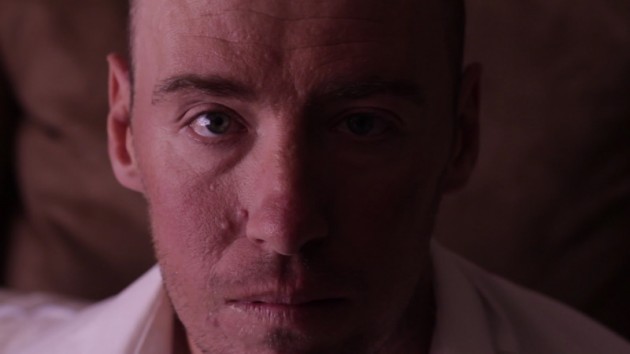
Higgy Wants In
OS: I’d like to conclude with a question about importance of New Waterford, Nova Scotia in your work. Your films have a musty smell to them, like a soggy pizza-box found after the winter melt. You glean the detritus from the rust-belt of the east coast, and form it into Lynch-inspired weirdness that comes naturally from people who live on the outskirts of the everyday. There are no sweeping drone shots of the dramatic seaside cliffs of Cape Breton Island. We won’t see the Ocean, lighthouses, or any Gaelic inspired folksy wisdom. Your work is about the people in your town, the honest-to-goodness necessity of folks who try to make a go of it in one of Canada’s so called “have-not” regions. There are other artists working in this community, notably filmmaker Ashley McKenzie, who featured you as a performer in her short film When You Sleep (2012). So many Canadian filmmakers have this sort of co-dependency with the region they grew-up in. Guy Maddin has been trying to escape his hometown for almost four decades, but the aesthetic of prairie surrealism never releases itself from his work. You recently moved away from New Waterford to Halifax. This worried me. Will you look elsewhere to situate your film work? How significant is the arts community in Cape Breton to the conceptualization and creation of your oeuvre?
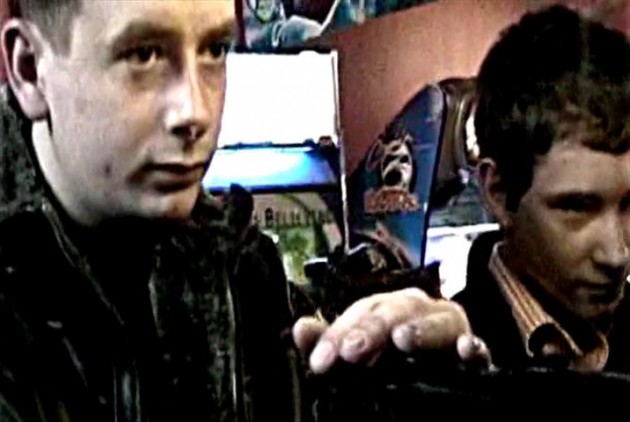
Buggery
WDG: I mean it’s not out of the question to situate a film somewhere else, but it’s something I honestly never think about. The next film will most certainly be set in Cape Breton. At times it can seem impossible to make films there, but the way I make a film and whatever sits well with me after I put the thing out there – I developed from those conditions. This co-dependency, I see it in myself and there’s co-dependency I recall or I notice in others, which is much more interesting and extreme, it found its way into the last one and I’m going back to it with what I’m writing now. I’m also returning to this idea of a surrogate family. I want to call it Two Cuckolds Go Swimming. There are so many stories and images specific to the place and I think they should exist in cinema. I can tell you I just saw a video of an old friend of mine from New Waterford cover that song “Drive” by The Cars. He posted it on a karaoke website. I’ve never seen a more beautifully awkward performance. The feeling you get from watching that video, the overwhelming sense of isolation, has everything to do with the work conceptually. With Ashley, Nelson (co-producer of Ashley Mackenzie’s work) and Jacky Mills (experimental documentary filmmaker, based in Sydney and Montreal), we all support each other a great deal because I think we genuinely really like what the other people are doing.
Notes
- Robert Bresson. Notes on the Cinematographer. Copenhagen; Green Integer, 1997, 42. ↩
- Stan Brakhage. Essential Brakhage: Selected Writings of Stan Brakhage. New York; MacPherson and Company, 2001, 142. ↩

